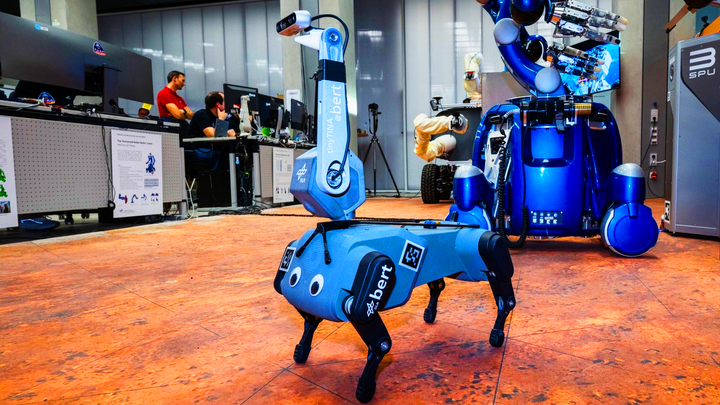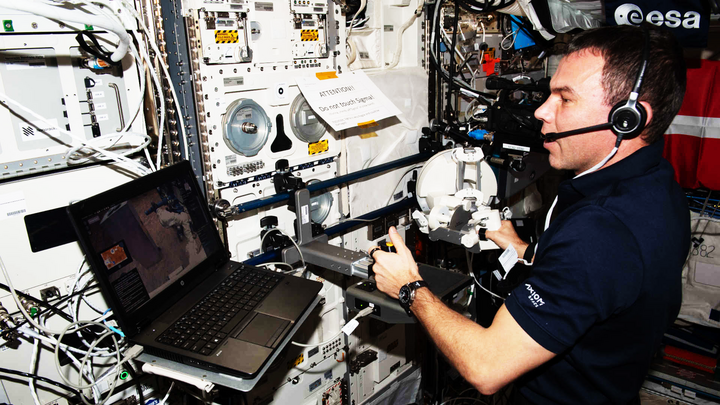The Surface Avatar project, launched in 2020 and run by the German Space Agency in partnership with the European Space Agency (ESA), aims to develop technology that will allow astronauts to control multiple robots independently and simultaneously, with high precision, or to operate semi-autonomously or fully autonomously in space. The hope is that when humans once again explore the surface of the Moon and begin to explore Mars, these robotic systems will be used to support those explorations.

Bert the dog-like robot receives control assistance from an astronaut in space. (Photo: ESA/Andreas Mogensen/X).
So recently, an astronaut on the International Space Station (ISS) of the European Space Agency (ESA) Marcus Wandt controlled Bert, a four-legged dog-like robot from space for the first time. Marcus Wandt conducted this experiment to check how time lag affects robot control in space missions.
During the test, Wandt was on board the Columbus module of the International Space Station (ISS), and controlled the robot Bert, which is in the Mars Laboratory at the German Space Agency's Oberpfaffenhofen facility. A series of tests saw Wandt take control of three different robots, starting with Bert.
After taking control of Bert for a while, Wandt allowed the robot to autonomously explore the simulated environment, while he also took control of the German Space Agency's humanoid service robot on wheels named Rollin Justin, and the European Space Agency's Interact Rover.

Astronaut Marcus Wandt successfully tested Bert, a four-legged dog-like robot. (Photo: ESA/Andreas Mogensen/X).
The experiment, which involved multiple robots, lasted two and a half hours and was all completed successfully. “Having Bert powered by legs, rather than wheels, could allow the device to climb hills or crawl into caves on Mars or other worlds in outer space more easily,” said the German Space Agency project director .
Another official from the German Space Agency said that so far, only wheeled robots have been remotely controlled by astronauts from space. But Bert has mastered several walking styles and, thanks to its flexible leg movements, can even explore rough terrain, including caves.
HUYNH DUNG ((Source: Space/Europeanspaceflight))
Source



![[Photo] Prime Minister Pham Minh Chinh chairs the first meeting of the Central Steering Committee on housing policy and real estate market](https://vphoto.vietnam.vn/thumb/1200x675/vietnam/resource/IMAGE/2025/9/22/c0f42b88c6284975b4bcfcf5b17656e7)


































![[Photo] General Secretary To Lam presents the First Class Labor Medal to the Vietnam National Energy and Industry Group](https://vphoto.vietnam.vn/thumb/1200x675/vietnam/resource/IMAGE/2025/9/21/0ad2d50e1c274a55a3736500c5f262e5)



































































Comment (0)